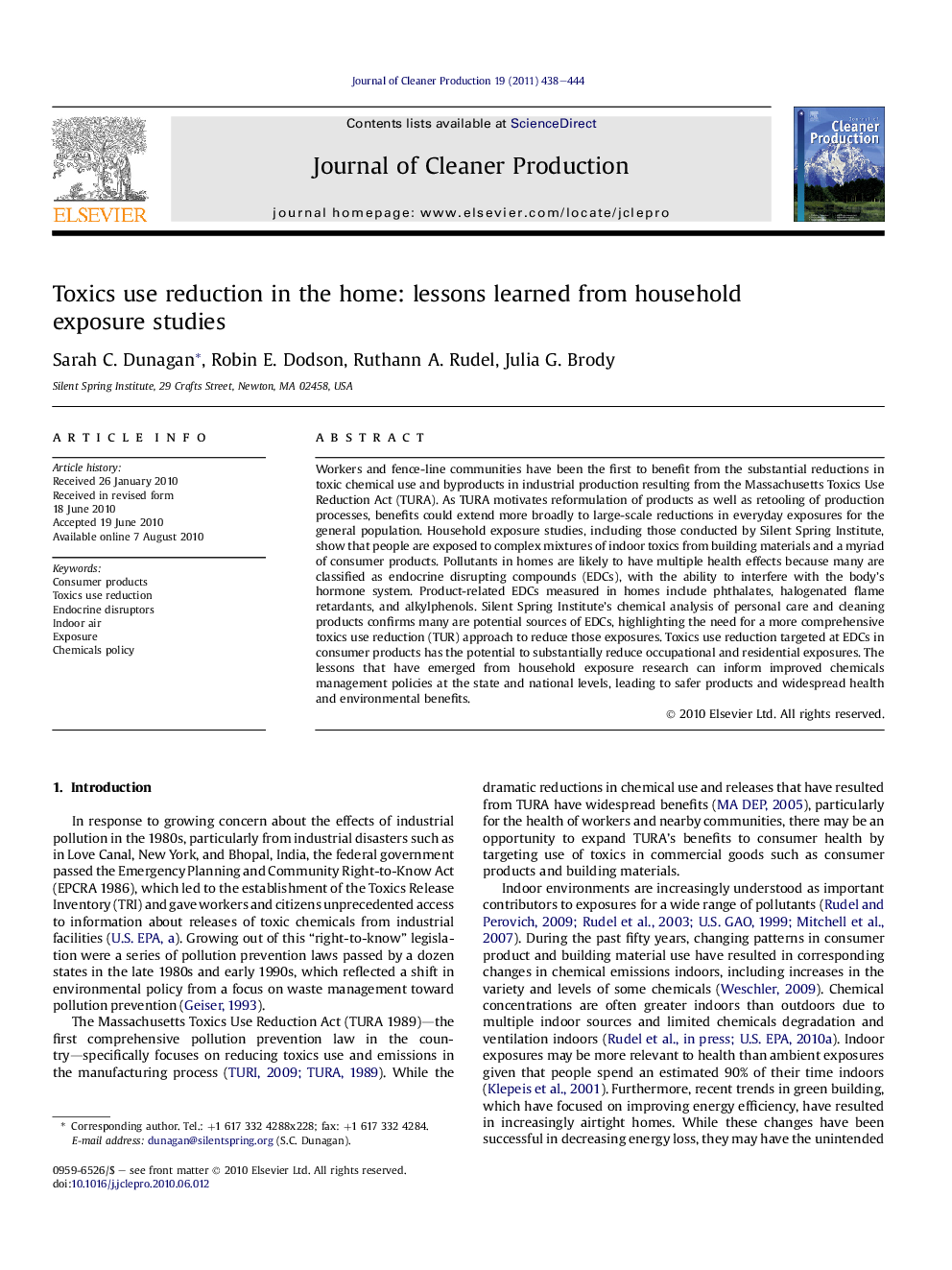| کد مقاله | کد نشریه | سال انتشار | مقاله انگلیسی | نسخه تمام متن |
|---|---|---|---|---|
| 1746255 | 1018087 | 2011 | 7 صفحه PDF | دانلود رایگان |

Workers and fence-line communities have been the first to benefit from the substantial reductions in toxic chemical use and byproducts in industrial production resulting from the Massachusetts Toxics Use Reduction Act (TURA). As TURA motivates reformulation of products as well as retooling of production processes, benefits could extend more broadly to large-scale reductions in everyday exposures for the general population. Household exposure studies, including those conducted by Silent Spring Institute, show that people are exposed to complex mixtures of indoor toxics from building materials and a myriad of consumer products. Pollutants in homes are likely to have multiple health effects because many are classified as endocrine disrupting compounds (EDCs), with the ability to interfere with the body’s hormone system. Product-related EDCs measured in homes include phthalates, halogenated flame retardants, and alkylphenols. Silent Spring Institute’s chemical analysis of personal care and cleaning products confirms many are potential sources of EDCs, highlighting the need for a more comprehensive toxics use reduction (TUR) approach to reduce those exposures. Toxics use reduction targeted at EDCs in consumer products has the potential to substantially reduce occupational and residential exposures. The lessons that have emerged from household exposure research can inform improved chemicals management policies at the state and national levels, leading to safer products and widespread health and environmental benefits.
Journal: Journal of Cleaner Production - Volume 19, Issue 5, March 2011, Pages 438–444